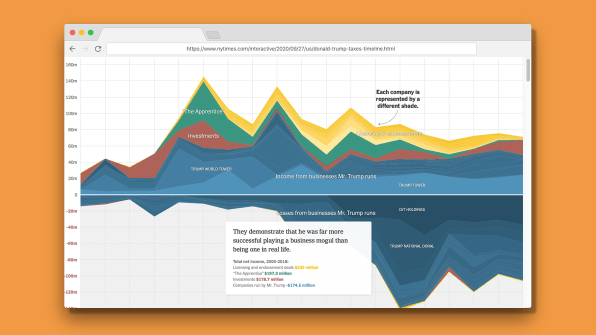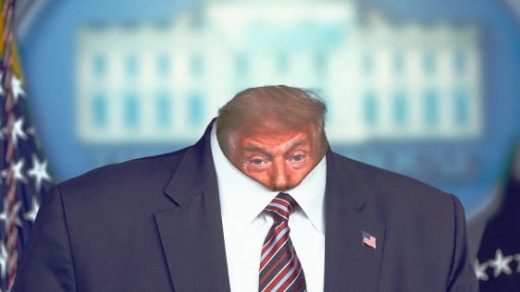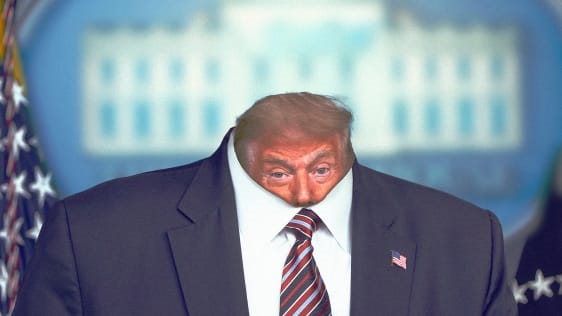See Trump’s astounding tax avoidance, summed up in one chart
Donald Trump has often been called a reality show president. But it may be more apt to call him a reality show business man. Because a massive NYT investigation of Trump’s long-hidden taxes from 2000-2018 tells the story of a man who inherited his parents’ money through tax schemes, lost a bunch, went on TV to make some back, and then lost it again.
And now, Trump owes hundreds of millions of dollars in bills that are soon coming due.
If you don’t have the patience and/or the accounting degree that it takes to fully grasp the intricate, 10,000-word story, then you might study up on the quicker, visual infographic that the NYT produced to go along with the scoop.
Rather than some cutesy, experimental visual presentation, the journalists told this story with a classic area line chart. Think of it as a line chart crossed with a bar graph: A favorite for financial presentations, since the line depicts revenue over time, while the filled portions help depict something you’d actually count, like cash on hand.

You explore the graphic by scrolling down the NYT page. It warms you up by explaining where Trump’s money comes from. He made nearly $200 million over his 18 years on The Apprentice (depicted in green) and another $230 million from related endorsement and licensing deals for for everything from Domino’s Pizza to Trump Steaks (depicted in yellow). Finally, he has made roughly $180 million over that time from investments he has in companies other than his own.
Then comes income from Trump’s businesses themselves. This is depicted in blue, which is perfect in this case, since this whole stat is basically one giant iceberg. Some of those businesses float above the surface (like Trump Tower), making tens of millions of dollars a year in aggregate. But they hide what’s lurking under the surface (such as the failed golf courses of Trump National Doral), with losses so great that his businesses have lost $175 million since 2000.
However, what’s worrisome for Trump’s finances is what’s not charted here. He has $300 million in personal loans coming due over the next four years, along with the potential of an IRS bill to the tune of $100 million depending on the results of an IRS audit. Trump appears to have no vast reserves of wealth, but he does have creditors—creditors whose identities we do not know.
It all adds up to the portrait of a man who is not just broke but owes unfathomable amounts of money, who is supposedly determining what’s best for America, but by his own insistence, is still in business for himself.
(8)



